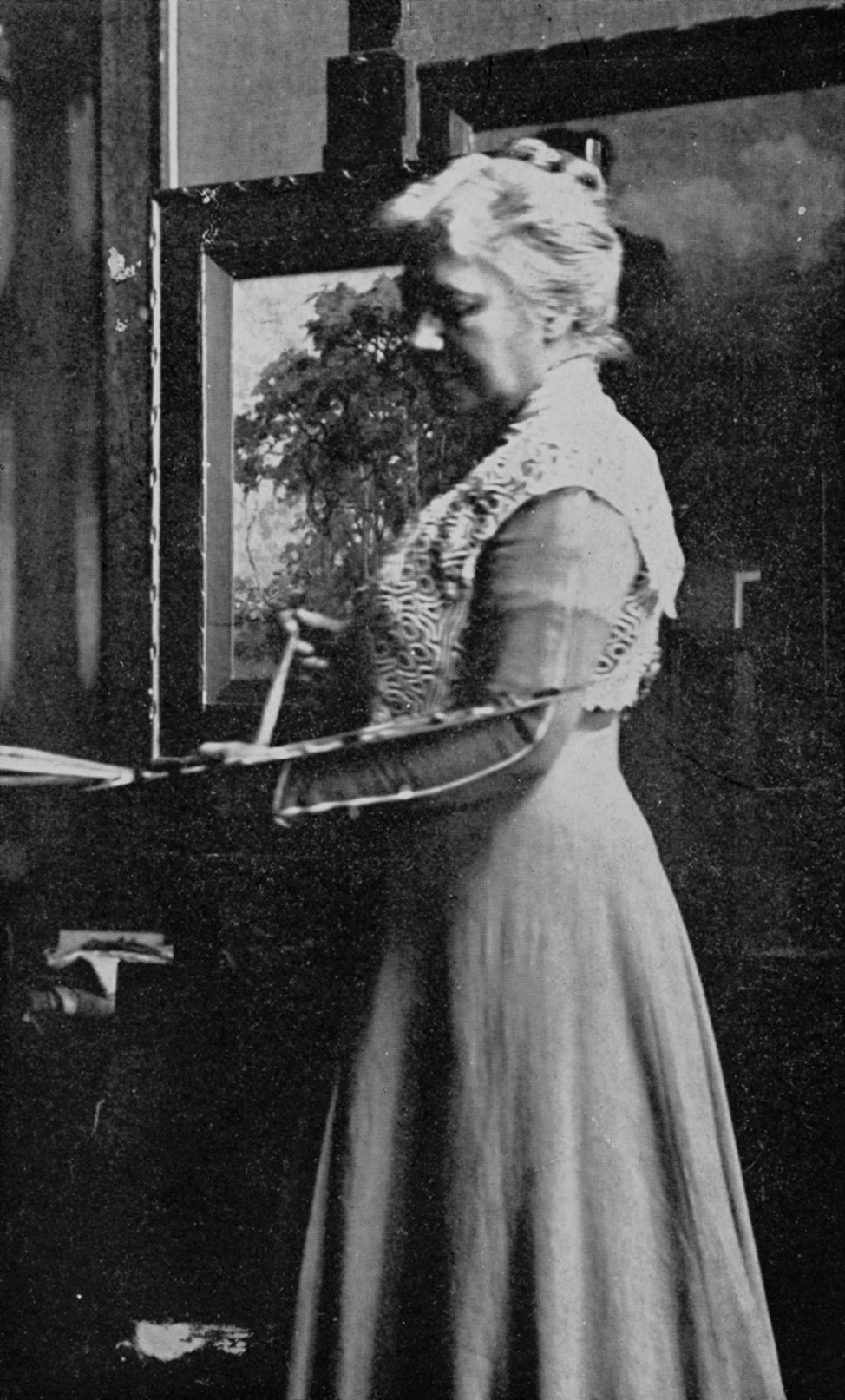
In George Agnew Reid’s 1889 painting “Dreaming,” the model is his wife, but she’s also an artist. We don’t see the face of the now nearly forgotten painter Mary Hiester Reid as she leans toward a fireplace in their shared Paris studio, but the glowing embers illuminate her long apron and clasped hands. Perhaps the fire represented the lady painter’s atypical artistic aspirations in a world still firmly dominated by men. But in practical terms, the fireplace also represented a challenge to the sitter-wife-painter, who had to cook all of her husband’s meals with it. “Haven’t done a stroke of painting,” Hiester Reid later wrote to a friend in 1909, “cooking & cleaning take all my time.”
“She must have given up hours to sit for George’s painting,” Mary Peacock writes in her new book Flower Diary: In Which Mary Hiester Reid Paints, Travels, Marries, & Opens a Door (ECW Press). After “Dreaming” was displayed at the 1889 Paris Salon, it was purchased by the Royal Canadian Academy and shipped to Agnew Reid’s homeland, where the artist couple lived for most of their marriage. “Not an image by Mary, but instead an image of her would hang on the walls of the National Gallery of Canada,” Peacock notes, echoing the uneven successes that would characterize the pair’s artistic careers throughout their lives and continue to this day.

One hundred years after Hiester Reid’s death, Flower Diary recovers the elusive, overlooked artist’s life and work. Hiester Reid’s sensitive, Tonalist paintings of flowers and trees sold at a fraction of her husband’s large narrative works, and she appeared much less frequently in exhibitions and the press. She left no diaries and few letters, but the lack of documentation doesn’t deter Peacock. Through extensive archival research and perceptive readings of Hiester Reid’s paintings, she convincingly argues that the artist “made still lifes like diary pages and landscapes like dream logs.” In her time between North America and Europe, Hiester Reid witnessed the birth of modernism and the rise of abstraction, yet she remained steadfast in her own artistic vision. Far from seeming fussy or outdated, Hiester Reid’s modestly scaled, soft-stroked pictures of drooping flowers and hushed night scenes still carry a poignant psychological charge.

Peacock is steadfastly conscious of the “limited and destructive ideas about gender, race, and colonialism” that her subject was steeped in. The author conveys the era’s social mores through careful description of the realities of daily life, from chamber pots to rudimentary forms of birth control. These details form a rich, intimate view of what the author describes as the “socially constricted world for women of which a person today can barely grasp the demeaning dimensions,” and make the painter’s defiances of these strictures — such as joining the Pennsylvania Academy of Fine Arts at age 29, or her trips to Europe to write and make art — all the more revolutionary for the time.
But Peacock’s work with Hiester Reid isn’t only from the position of scholar or viewer. As in her previous biography about Mary Delany, the inventor of cut paper botanical collage, Peacock interlays Hiester Reid’s story with scenes from her own life. In this case, the author tells the story of her relationship with her late husband, who died last year. Peacock is also a poet, and her prose is lyrical and poignant. The parallels and contrasts between Peacock’s and Hiester Reid’s stories make us appreciate just how much has changed for married creative women, and just how rich their lives can be.


Flower Diary: In Which Mary Hiester Reid Paints, Travels, Marries, & Opens a Door by Molly Peacock is published by ECW Press and is available on Bookshop.
0 Commentaires